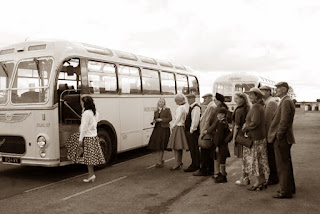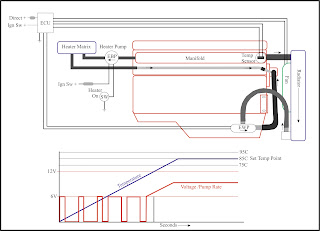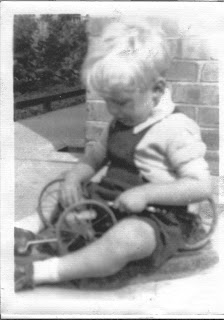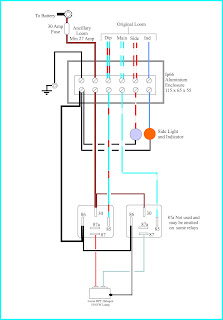Cylinder Head, Compression Ratios and Gasket Choice
After a few hiccups relating to shims, I finally feel happy with my cylinder head assembly. The waterways have been welded up and re-machined with 18 thou skimmed off to clean it up. Inlet and exhaust faces have had a light skim to ensure absolute flatness. New hardened seats and phosphor bronze guides have been fitted along with stainless steel valves and new springs. The camshafts were in excellent order and just needed a light clean up and new bearings. So all in all, a pretty comprehensive head overhall.
Time to decide on the ideal compression ratio and consequent gasket thickness, with a wide range available, from the original 15 thou, all the way up to special order composite items at 130 thou. First I need to re-establish head chamber volume after machining. I did this exercise previously by using liquid paraffin, establishing its specific gravity and weighing it on letter scales. All chambers came out at between 105 and 107cc which I thought a little high but surprisingly the C/R came out about correct at 8:1 on my spread sheet.
This time I did the same exersise using a 100cc burette and water (as I subsequently discovered that the SG of liquid paraffin is not absolute) and they came out at around 95cc.
| No more make shift measuring. A proper burette and a clear DVD stuck down with a smear of grease. The head was first set exactly level to avoid surface tension bubbles under the plastic. |
To acheive my ideal 8.5:1 C/R my spread sheet indicated that I required a gasket of around 90 thou and Rob Beere racing had a Cometic 98 thou composite item in stock.
Delivered the following day it was fitted and the head duly torque'd down to 60 foot pounds
PROBLEM
No matter how hard I tried, and how carefully I positioned the tensioner, one or the other sprockets would not go over the end of the camshaft indicating too thick a gasket or too short a chain. I had, as a matter of course previously checked the chain length against the original with no discernable difference. The shortfall was nothing more than at most a frustrating millimeter or so, indicating a gasket thickness reduction of half that (as the chain goes around two sprockets) - around 20 thou. Again consulting my spread sheet, going down to 60 thou would produce a C/R of just over 9:1 not my absolute ideal but easily acceptable.
More on the final outcome in my next post.
Dynalite - an alternator that looks like a dynamo
I spent quite a while researching this and finally concluded that it was a worthwhile upgrade, producing a maximum of 40 amps and wieghing 10 pounds (the original Dynamo wieghs 19). The alternative was to buy the bracket and pulley plus a cheap scrap-yard alternator. It would doubtless have saved a considerable sum but the essential pulley only comes as part of an upgrade kit, with no supplier prepared to sell it on its own.
The dimensions of the Dynalite are identical to the dynamo and I added the finishing touch by fixing the original "Lucas Special Equipment" plate and faux rivets to the body.
| Adding the Lucas plate has probably voided the guarantee! |
Morgans Diary
Anyone wanting to know what's happening on the Classic Car scene in the North of England buys Morgans Diary in February, which lists pretty comprehensively every event for the year. It's also used by organisers to avoid clashes with other events. So how did this super useful publication come about?
Many years ago before the internet, Mr Morgan started to keep a list of dates for Classic Car events, Auto-jumbles etc. in the North of England and word got around that he was the man to ask if you were planning an event or looking for something to do at the weekend. After a while he formalised his lists into a small printed publication and sold copies, with the proceeds going to charity - Good Bloke. It's popularity grew to the point where it was almost a full time job for a single individual and Mr Morgan decided he had done his bit and it was time for someone else to take up the reins.
Step up to the plate Tony Raylor and York Vikings Rotary Club - with many volunteer hands to make light work of the job. Morgans Diary (Now officially called Morgans Guide to Historic and Classic Vehicle Events) has raised to date an amazing £150,000 for charity and recently handed over £10,000 to The Great North Air Ambulance.
For a publicity shot they needed an appropriate Classic car as a link and as I had the time and live reasonably close to Tees valley Airport I was both happy and honoured to oblige.
| Rotary Chairman Martin Kirby hands over a Cheque for £10,000 to Great North Air Ambulance Paramedic Dave Allanby |
Raby Castle - JDC Area 11
The lack of overall progress in the past two weeks has mainly been down to a very busy schedule of shows and trips with no work taking place over any weekends in June.
June 24th was JDC Area 11's main annual event at Raby Castle. As an added attraction we decided to take my rolling chassis along. It created a huge amount of interest and it was gratifying to hear dads explaining to their kids the purpose and function of the various parts, normally covered up.
| 120 Rolling Chassis on display at Raby Castle June 24th |
the Mike Myres Union Flag painted "Shaguar" and an XK8 from the Bond Movie, Die Another Day, with a Gatling type gun mounted on the back.
| Couldn't miss this photo opportunity |
| Mr G M wisely removed his shoes before entering. |
| Safely back home. Shame about the sheep Sh--- in the tyre treads |
| Hob Hole near Westerdale - Superb "exactly as shot" composition by Geoff Mansfield with only a few seconds to set up. |
Next post mid July













